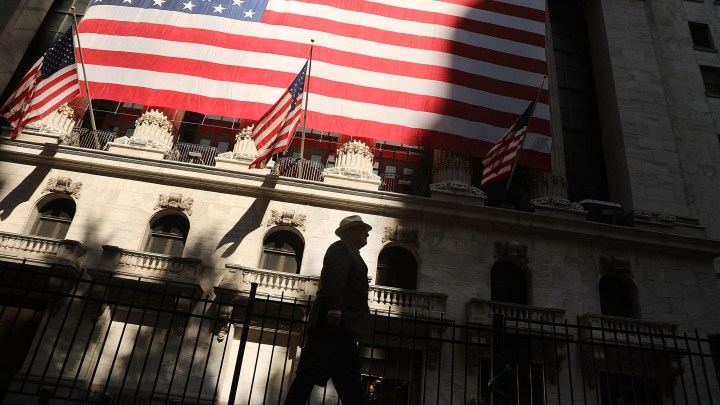
Why this yield curve inversion could be different

Yield curve inversions have a pretty good track record of predicting recessions. But in this economy, some economic metrics and rules of thumb haven’t been working very well.
Low unemployment should be pushing wages higher, but Federal Reserve Chair Jay Powell recently said things don’t seem to work like that anymore. Consumer sentiment and spending remain strong despite gathering clouds.
The yield curve could be another example. There are a couple of reasons why it might be inverting that have nothing to do with an oncoming recession.
The Fed’s balance sheet
One is that the Federal Reserve owns government bonds it bought to stimulate the economy after the financial crisis as part of its quantitative easing program.
That generated a lot of demand for bonds, so prices rose and yields dropped.
A report Wednesday from Wells Fargo said if the Fed didn’t own all those bonds, the yield curve probably wouldn’t have inverted.
“It’s not clear that the yield curve is actually giving a signal of recession at this point,” said Drew Matus, managing director of global economics and market strategy at Metlife Investment Management.
A lack of inflation is driving down bond yields
Longer-term bonds tend to pay more than shorter-term bonds because they try to stay ahead inflation.
Ben Carlson at Ritholtz Wealth Management said it’s kind of like a buffer in case prices rise while an investor’s holding a bond for a decade or longer.
But now that buffer’s gone. That’s because inflation isn’t behaving the way it should, either.
Kenneth Rogoff, an economist at Harvard, said when the economy’s booming and unemployment is hitting record lows, wages should start to rise. That would eventually start showing up in inflation figures.
But it’s not. Rogoff said the real mystery right now is why.
“It’s remarkable,” he said. “I don’t know of anyone who really pretends to understand this.”
Former Fed Chair Janet Yellen weighed in on the inverted yield curve, telling Fox Business that it’s not a great signal of a coming recession.
There’s a lot happening in the world. Through it all, Marketplace is here for you.
You rely on Marketplace to break down the world’s events and tell you how it affects you in a fact-based, approachable way. We rely on your financial support to keep making that possible.
Your donation today powers the independent journalism that you rely on. For just $5/month, you can help sustain Marketplace so we can keep reporting on the things that matter to you.












